Louise Renée
Year of birth: 1951.
Where do you live: Winnipeg, Manitoba, Canada.
Your education: B.A (Hons), M.A., Ph.D. in French Literature, plus many studio and art history courses.
Describe your art in three words: Passionate, Heartfelt, Engaging.
Your discipline: Realistic or semi-realistic images in soft pastel.
www.louiserenee.com | Instagram
You taught French Literature for over 30 years before becoming a full-time artist. How has your background in literature influenced your artwork?
Literature is a grab-bag of all the disciplines rolled into one. It gives me a deeper understanding of history, philosophy, psychology, and even music and art history. It teaches me that personal experience can reach universal significance. It also helps me reflect on my own work. After completing a painting, I write a short text that emerges naturally from each piece, as if the painting were speaking to me. So in a sense, my paintings lead back to literature! In case you’d like to read these short texts, they accompany each painting that I’ve posted on my website at www.louiserenee.com.
My love of literature has also inspired some of my paintings, for example, “Revolting Rhinos.” I depicted the rioters of the January 6 insurrection as rhinoceroses. After WWII, the Romanian-French author Eugène Ionesco wrote a play about perfectly decent French people turning into rhinoceroses. He wanted to convey the idea of how easily people could swallow fascism and turn into unthinking beasts. Powerful metaphors find a natural home in both art and literature.
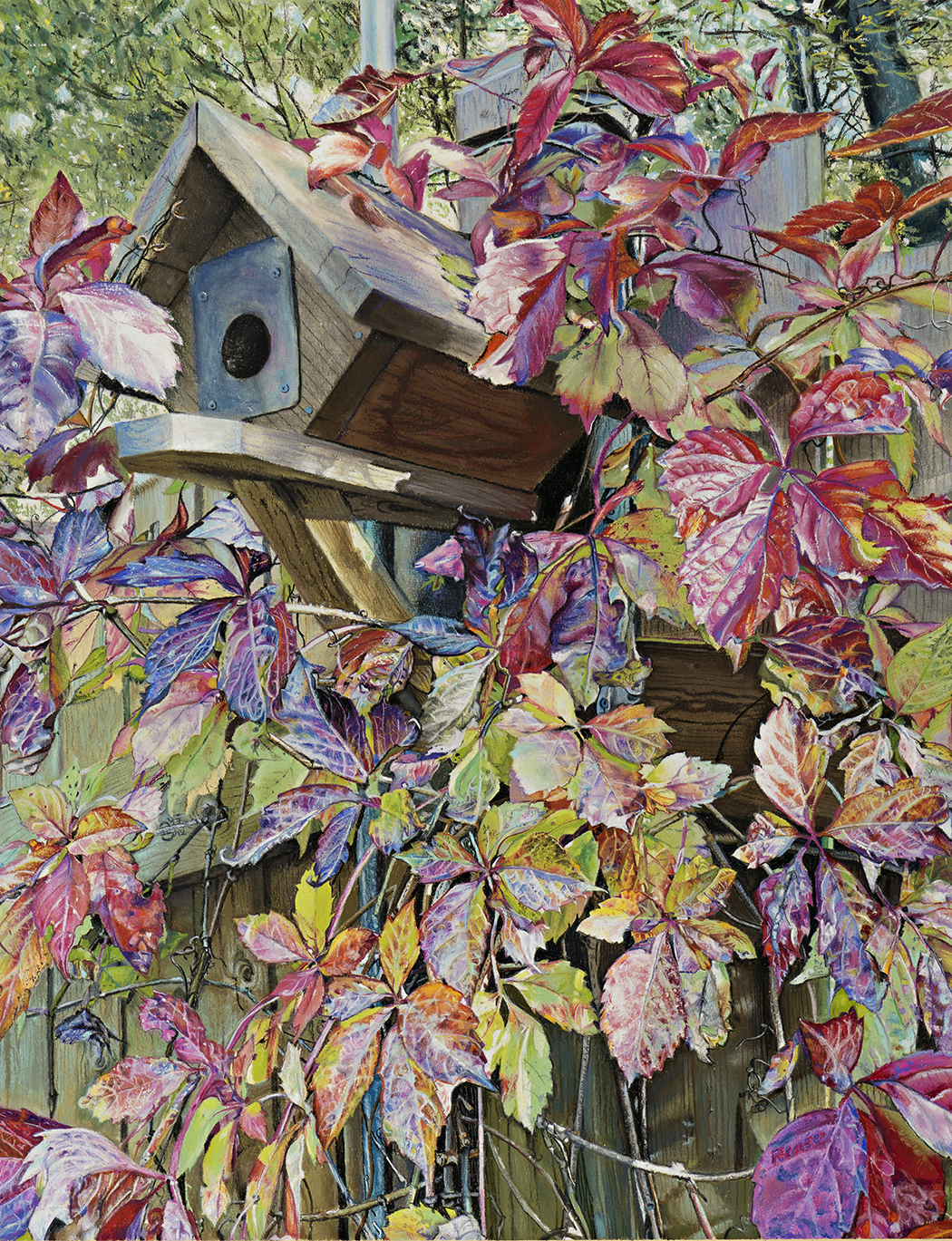 Louise Renée | Autume Sanctuary
Louise Renée | Autume Sanctuary
What inspired you to transition from teaching to painting full-time after retirement?
When I was 18, I was torn between majoring in art or literature. I chose literature because I also love teaching. In my literature courses, I often chose novels that drew attention to social and ethical issues. I wanted my students to challenge their own assumptions and to think about making the world a better place.
The art courses that I took over the years were wonderful, but when I turned 64, I realized that I needed to devote myself entirely to my other passion before it was too late! And there was no turning back. I’ve loved every single moment that I’ve devoted to art. Art has become my retirement sanctuary, which I tried to express in the first painting I did after retiring (“Autumn Sanctuary”). Ever since, I’ve tried to convey joy, enthusiasm, gratitude, but also critical thought.
Your art often reacts to current events and aims to convey hope for humanity. How do you balance a critical commentary with a message of hope?
I feel so strongly about what is happening around the world. In my Ukrainian series, I condemn the aggressor unequivocally. I try to convey the idea that so much potential goodness is wasted because of this war. But the goodness is there. Hope lies in the courage of the people who resist tyranny and oppression. I also do many paintings depicting joy, love, and the beauty of nature that counterbalance the horrors of the world. I cling to the hope that humanity will one day come to its senses and see the miracle of ordinary things that give life so much meaning. After the Ukrainian series, I focused on floral close-ups to immerse myself in colour, energy, and sheer beauty (for example, in “Life”). We must be aware of everything that’s going on, but we need to remind ourselves of the good things in life and not wallow in despair. Without hope, we have already given up. Even when I tackle difficult subjects, the very act of painting fills me with hope.
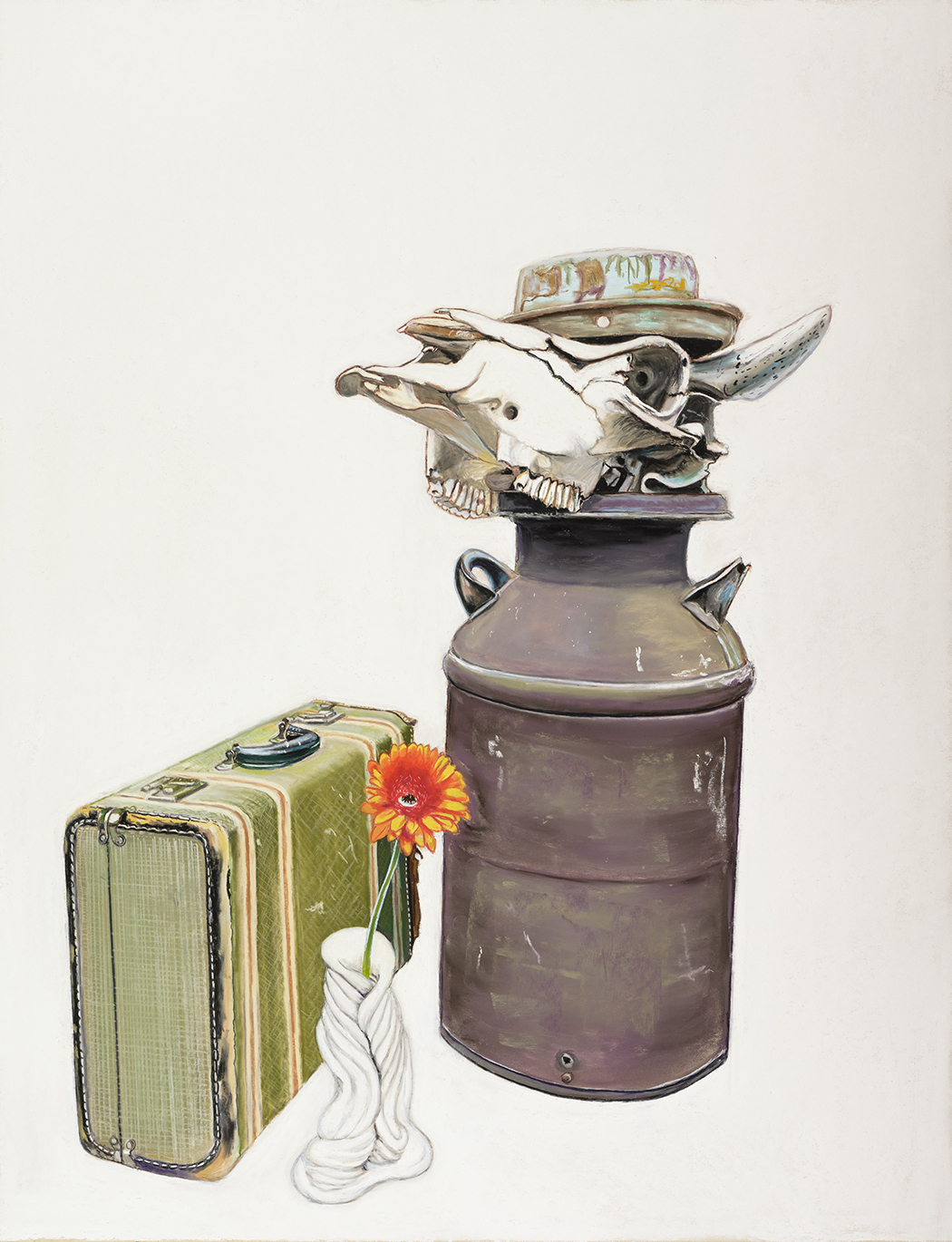 Louise Renée | The Clown President
Louise Renée | The Clown President
Can you tell us more about the symbolism in your painting “The Clown President”?
In November, 2020, I composed a still life to represent what I thought of the American president. The milk can: he has milked the system for all it’s worth. The milk can lid: a clown’s hat. The fake red flower in the melted-looking vase: his ubiquitous red tie in layers of fat. The suitcase: it’s time for him to go. The skull: the death of democracy.
And now, in 2024, he’s become even more dangerous, openly admiring other autocrats and using their insidious tactics to brainwash his followers.
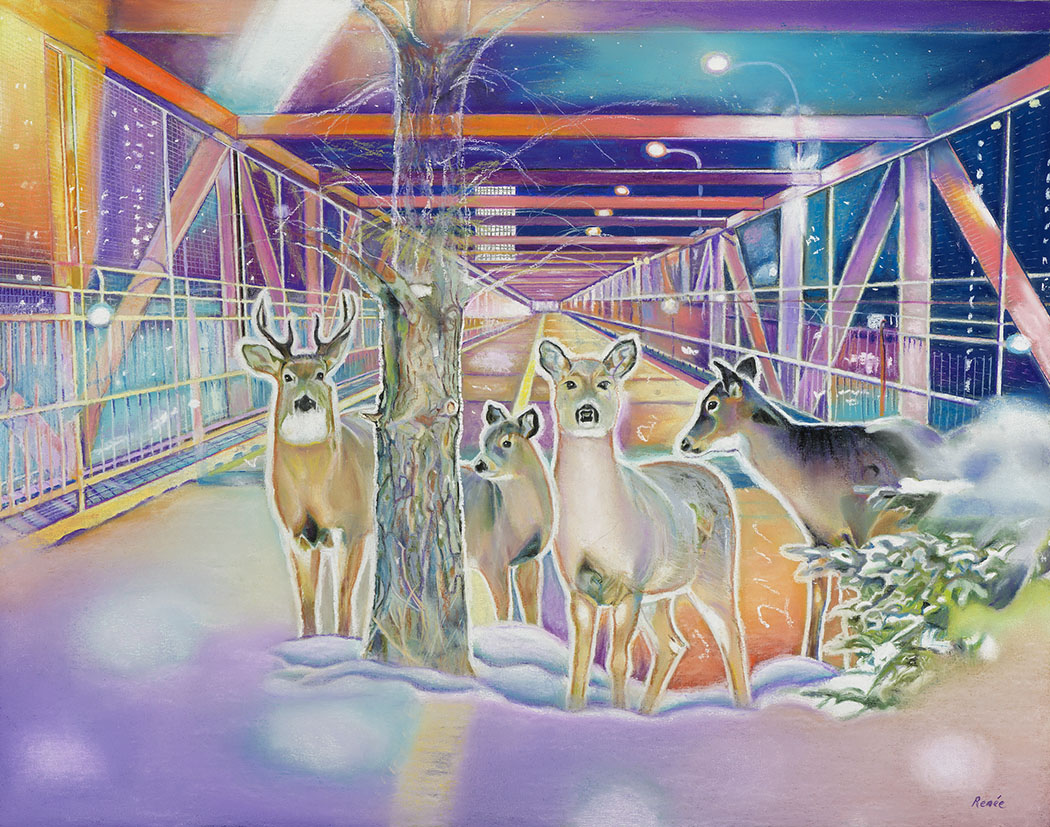 Louise Renée | Beyond
Louise Renée | Beyond
“Beyond” is a tribute to your father. How do personal experiences and memories influence your work?
I think we’ve all been deeply moved by certain people in our lives, people whose voices continue to echo in our minds long after they’re gone. During the pandemic years, I felt the need to go back into my family history and remember the good times we shared. I painted my father giving my mother rides in an old rusty wheelbarrow when they were in their sixties. For me, this scene epitomizes their love and the fun they had together (“The Best things in Life are Free”). I did a painting of my mother still baking bread at 85 years old (“Let the Sun Shine In”). Recently, I painted my cousin and his little grandson (“Snug as a Bug in a Rug”) because I also had the experience of becoming a grandmother for the first time. Often, I have an experience of awe before the incredible beauty of nature. A fire will burn in my heart until I’m able to express it in a painting (“Birdbath Kaleidescope”, “New Beginnings”, “Nature’s Blend”). I’ll also choose a subject because of strong emotions that need an outlet, such as “Buddy”, a humorous portrait of myself and my dog.
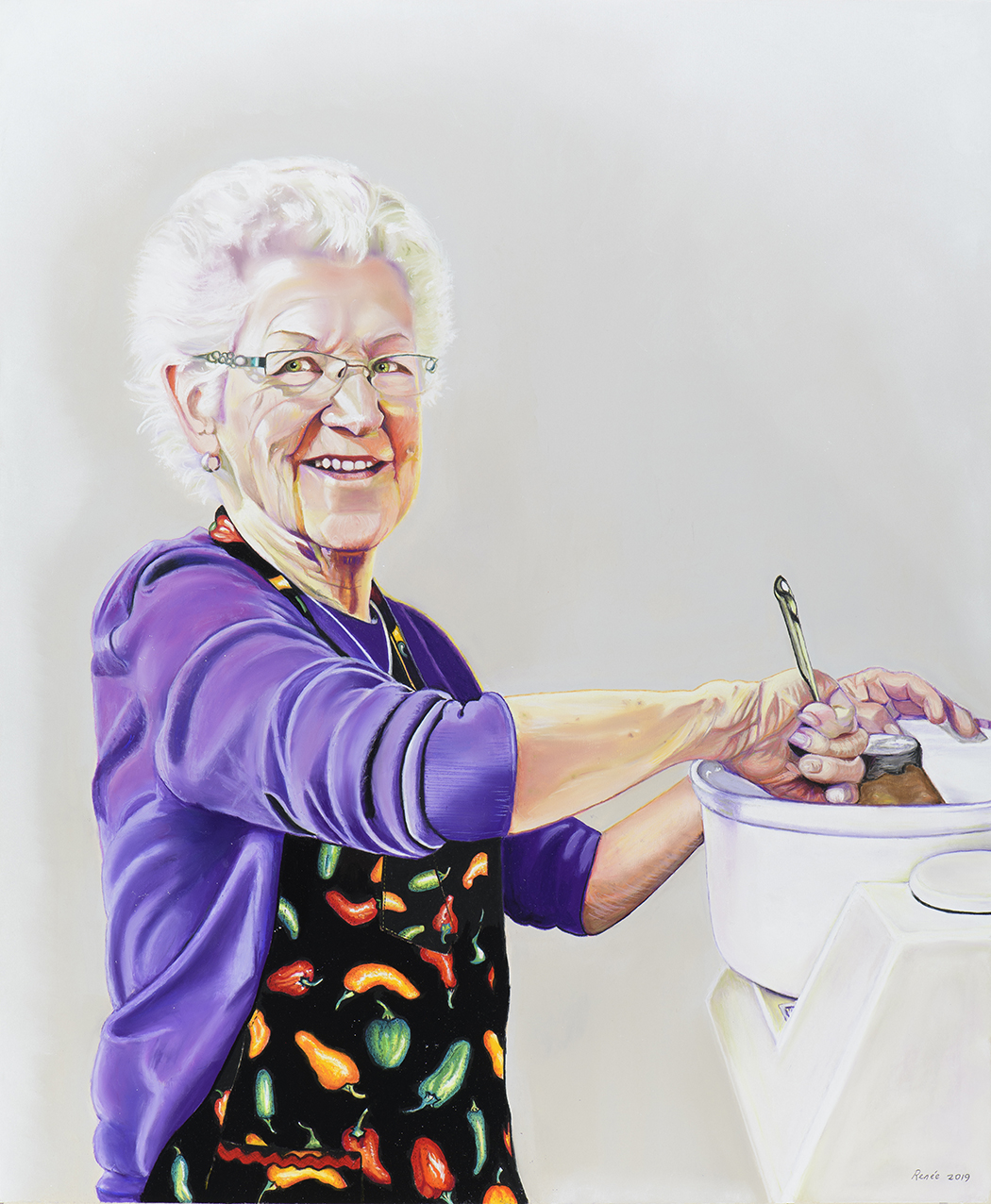 Louise Renée | Let the Sun Shine In
Louise Renée | Let the Sun Shine In
You’ve received many awards for your work, including first prize for a pastel painting. What does this recognition mean to you?
These honours encourage me to continue growing as an artist. They let me know that other people are as moved by a painting as I was while creating it. Awards make me feel that I’m in a community that understands how art connects us despite our differences.
Do you have any advice for aspiring artists who are looking to make a transition similar to yours?
Yes! You can already guess my answer – it’s never too late! You won’t regret it. Art is one of the most fulfilling activities you can possibly imagine. You lose track of time. You bypass your intellect and allow creative energy to take over. You learn something with every single painting. There’s no limit to what you can produce. It’s a fountain of youth in your old age!
Art has mysterious powers that often transcend our grasp.
At times, I choose a particular subject and I have no idea why. Some mysterious impulse calls out to me, and I don’t try to understand it. And then, after the painting is done, I sometimes have astonishing surprises. For example, an old friend of mine had recently retired from her optometry clinic. Her adult children asked me to do a painting to celebrate her retirement. They wanted me to use one of her own photos as inspiration. I asked them to send me as many as possible because I had no idea what would strike a chord in me. My friend had been all over the world and had taken amazing photos that could have been prize-winners. But for some strange reason, a very modest little photo of a pine twig caught my eye. There were two pinecones on the twig, one half-eaten by a squirrel. I worked away at the painting, exaggerating the astonishing colours hidden in the pinecones and marveling at the vibrant, energetic lines of the needles. As I was finishing the painting, I wondered if, by chance, there was any possible connection between pinecones and eyesight, since my friend was an optometrist. Lo and behold, the pinecone is the symbol of the Third Eye which is related to the pineal gland. The Third Eye is said to connect the inner and outer worlds. Intuition, psychic ability and wisdom are said to permeate from it. It is considered to be the “seat of the soul” – the symbol of spiritual enlightenment. My friend’s children gave her the painting just as she was returning from a trip, not even having had time to unpack. She gasped as she tore off the wrapping paper. She opened her suitcase and said, “You won’t believe what I brought back as a souvenir – a pinecone!”

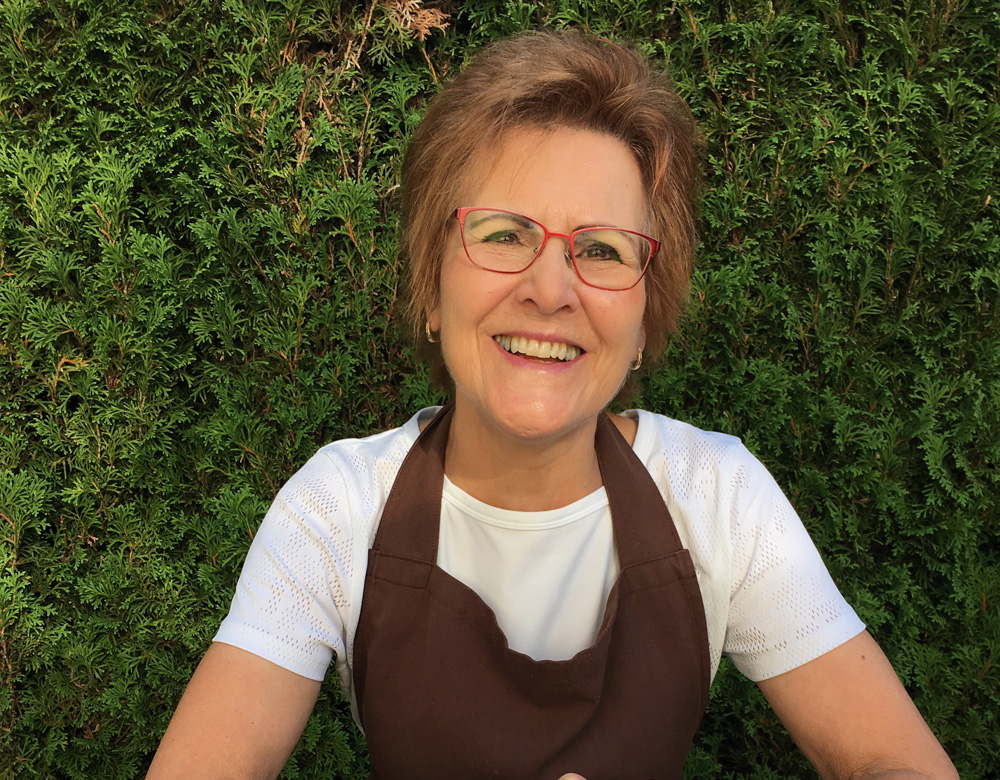
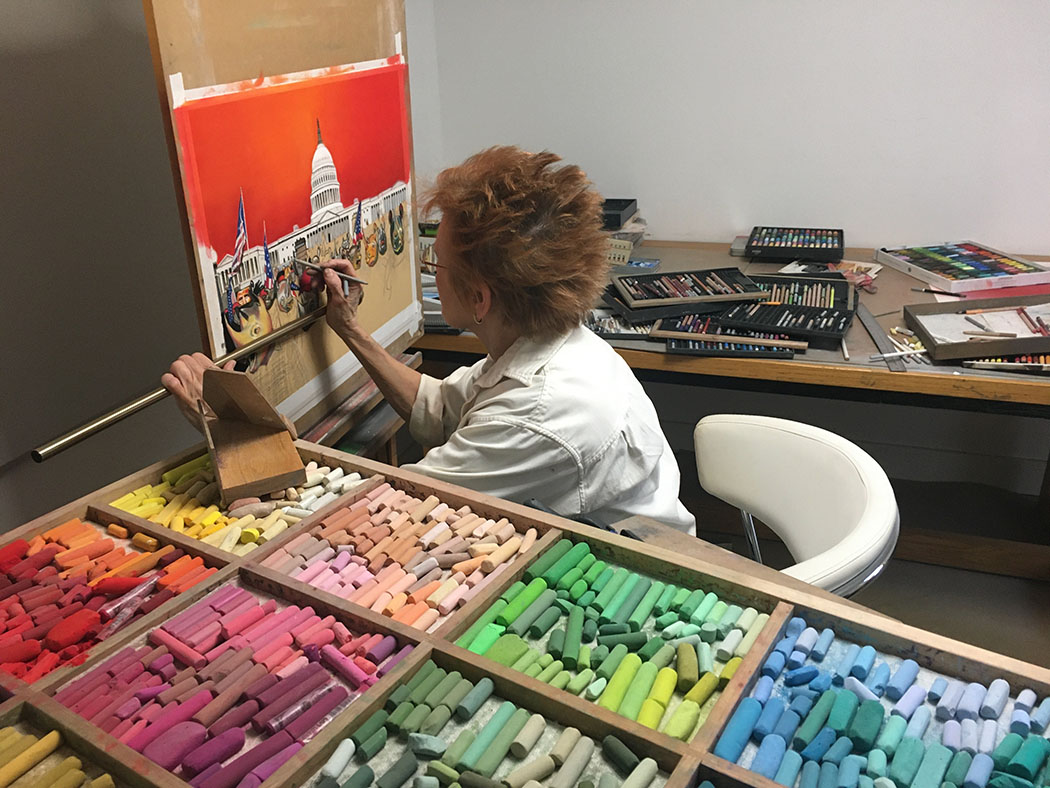
Leave a Reply
You must be logged in to post a comment.